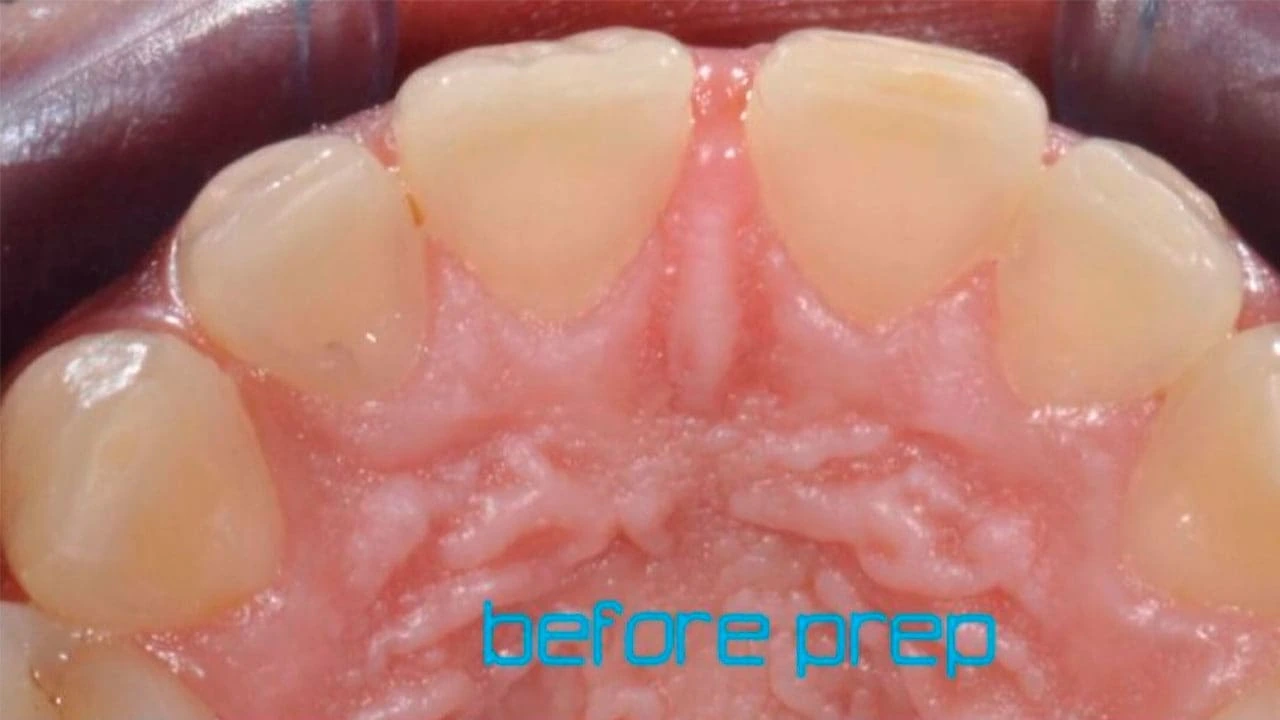Minimally invasive preparation.
Scroll through the photo to see the before and after treatment.
↔













Veneers are thin ceramic sheets that are placedn on the front of the tooth to modify shape, cracks, color, sometimes even correct small alignments. The use of one or another material gives rise to differentiated treatments.
The choice of material will depend on many factors, among others, the patient's habits, and the diagnosis will be determined after the first assessment, explaining in detail. beforehand the pros and cons of both treatments.
The ideal thing if you want to do a smile design is to do prior whitening, to have a good substrate when making the veneers, whether ceramic or composite. In both cases, the thin sheets present certain transparencies that allow let the light pass through and reflect in the final result.
Ceramic veneers are very thin sheets (between 0.3 and 1.8 mm thick) custom-made in the laboratory that they join on the visible part of the tooth, in the external and front part.
This type of veneers It constitutes a conservative treatment and requires preparation of the tooth on the front side (minimally invasive preparation).
It is necessary a prior smile study, personalized and appropriate for each patient. Photos, videos, and impressions are taken to evaluate the smile and facial features.
Ceramic veneers are the most aesthetic material, they do not absorb stains and are completely intact over the years. Revisions are required, as they should be regardless of veneers. They are more expensive at first, but are more resistant and durable.
The two optimal ceramic types for porcelain veneers are feldspathic and lithium disilicate.













